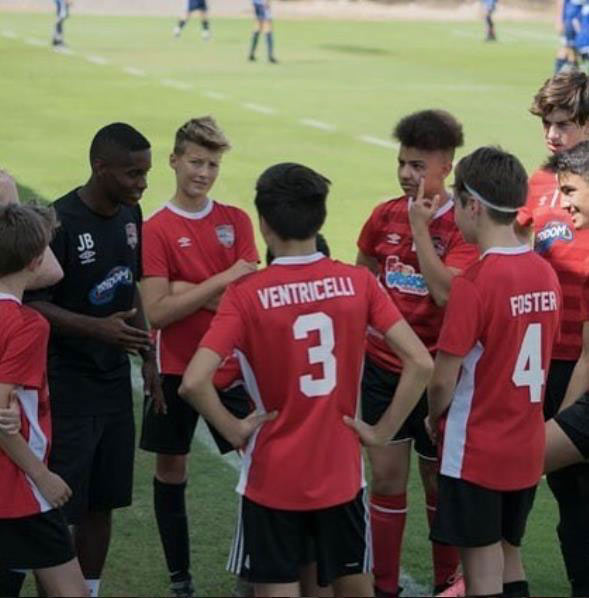NUTRITION
Hydration Strategies
When players work hard, they lose sweat – in a game on a hot day, sweat losses may reach 3 litres. On a cold day, though, some players will lose very little sweat. Every player’s hydration needs are different and will vary with the weather over the season. Just as general training and competition strategies should be tailored for individual athletes in accordance with their unique needs and preferences, so should their drinking and eating choices during exercise. Players, coaches, and trainers should fine tune these recommendations to identify their own winning formula.
How much and when to drink?
Players should limit dehydration during training and matches by drinking water or a sports drink. Obvious opportunities to drink during a match include warm-up and at half time. During training, the coach or manager should organise drink breaks according to the weather and intensity of the session.
Training allows opportunities for players to get a feel for sweat rates and fluid needs so that drink practices can be adjusted accordingly (see box). It is not necessary to drink enough to match sweat loss, but the
amount of dehydration should normally be limited to a loss of less than about 2% of body weight (ie, 1.0 kg for 50 kg person, 1.5 kg for a 75 kg person, and 2 kg for a 100 kg person).
The negative effects of dehydration on high- intensity performance are greater in warm environments, so drinking practices in these conditions should be upgraded to reduce the overall fluid deficit. This may include drinking at the side-line when match play is interrupted, or having extra drink breaks during training sessions.
There should never be a need to drink more than the sweat loss so that weight is gained during exercise. This will not help performance and is likely to cause gut discomfort.
When do you need more than water?
Depletion of fuel stores can be an issue for football matches, especially for players in mobile positions or with a running game style. High carbohydrate strategies
–fuelling up for the game and consuming extracarbohydrate during the match – have been shown to enhance performance in such players.
Better intake of fluid and fuel during a game may not only keep players running further and faster in the second half of a match, but it can also help to maintain skills and judgement when players would otherwise become fatigued. Games are often won and lost in the last minutes of the match, and fatigued players are at increased risk of injury.
The use of commercial sports drinks with a carbohydrate content of about 4-8% (4-8 g/100 ml) allows carbohydrate and fluid needs to be met simultaneously in most events. The intake of carbohydrate that is generally associated with performance benefits is
~ 20-60 g per hour.
Sodium should be included in fluids consumed during exercise lasting longer than 1-2 hours or by individuals during any event that stimulates high salt losses.. You c a n recognize “salty sweaters” by the salt rings on their clothes at the end of a hard session on a hot day. Players who lose a lot of salt may be more prone to muscle cramps. Adding a little extra salt to food and drinks and using the higher sodium version of sports drinks may reduce the risk of cramping for these players, but probably does not benefit other players.


